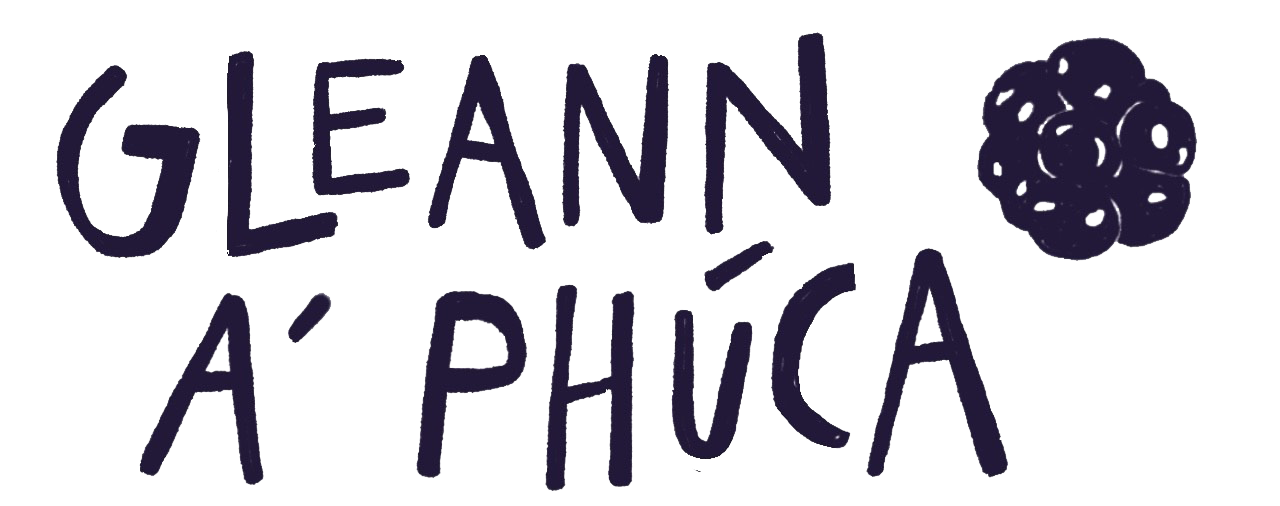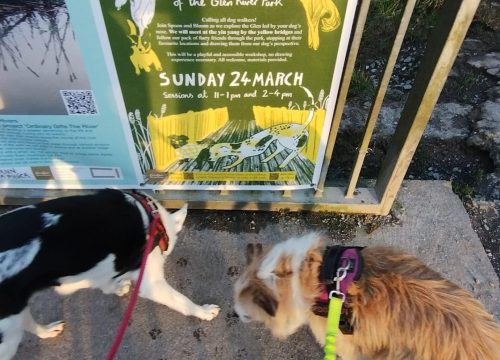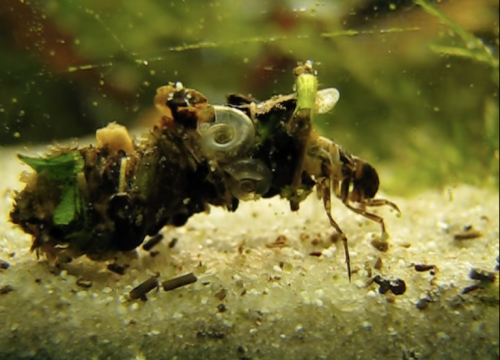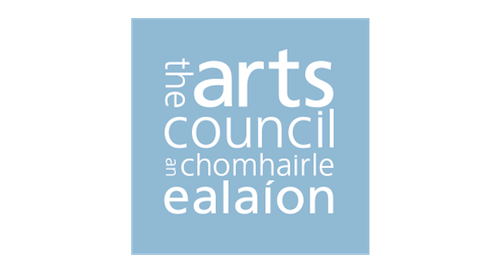Build a Rainwater Garden
Build a Rainwater Garden – The Water Works – Thursday 2 November 2023
The sun shone and the sky was blue, I had plenty of time and I took a diversion to the Shaky Bridge, to feel the flow of the river beneath me, I was enjoying the sight of an apple tree laden with the most vibrant red fruit, leaning over the water, along the edge a shoreful of bright red bobbers – just as I was turning to leave, a creature broke the surface of the water and I was enchanted to catch a glimpse of one of the Lee’s otters.
Today I learned about Rainwater gardens, how by capturing the run off from urban roofs we can feed gardens and absorb run off, helping to prevent flooding in the concrete jungle. Sadhbh Burt Fitzgerald from Bí Urban has been working with green spaces in inner city Dublin for more than a decade with her mother, and the generational knowledge of their partnership she says, is vital. Claiming green space and wild space in the city is vital. The team first began work with a disused railway track that had become re- wilded and a hive of bio- diversity, they called it “The Life Line”. Unfortunately the infrastructure was reclaimed for the city’s transport network and they lost one of the few urban wild spaces available to them. The Life Line evolved and other projects followed in tandem with development in the area. The Broadstone Apiary was a stewardship project for bees and Sow Wild was a guerrilla gardening project planting wild seed mixes in patches of open ground during the lockdown.
The majority of Dublin homes don’t have gardens. Rain gardens divert water from the down pipes from the gutters of homes into prepared beds at street level. In urban areas you must have a minimum of 1.8 metres for wheelchair as well as pedestrian access before you can introduce street furniture out side your home . Sadbh spoke about the guiding premise of “Urban Acupunctur “– a system advocated by Brazilian urban planner, Jaime Lerner. By setting up pockets of gardens in a network across the city it’s possible to manage urban renewal in a sustainable way, through community involvement and connection. The Bí Urban supported rain gardens are plotted on a google map and cover a sizable proportion of Dublin city.
Rain garden beds should have a mixture of wild flowers with long tap roots and ground cover plants to provide a microcosm for wildlife and protect from drought. Rain gardens can support potatoes, tomatoes, herbs and other edibles, it’s important to have a mix of plant levels above and below ground. This helps both soil quality and promotes Bio- diversity.
Through trial and error Bi Urban have compiled a list of technical considerations to keep in mind when building a rain garden including the type and material of the down pipe; treated timber for the boxes; the type of fittings; the load bearing capacity of frame and screws; and more. They have generously shared this information on their website: https://www.biurban.ie/rain-garden-project
All together this was a heartwarming event, it was brilliant to see familiar faces of some of Cork’s ecology warriors and feel the support for the time we put in to caring for our environment.
Thanks to both Catherine Seale, community water officer (LAWPro ) and Rosemary McDonald, bio-diversity officer (Cork City Council) for organising a very positive event and the Water Works for hosting it. No Pictures this time – lost in the moment – just one of the Shaky Bridge on the way home
Here’s a video from Bí Urban about the positive impact of Rain Water Gardens https://youtu.be/mWGwdz13_qg?si=tTRxWRghSSwT7fDe
















